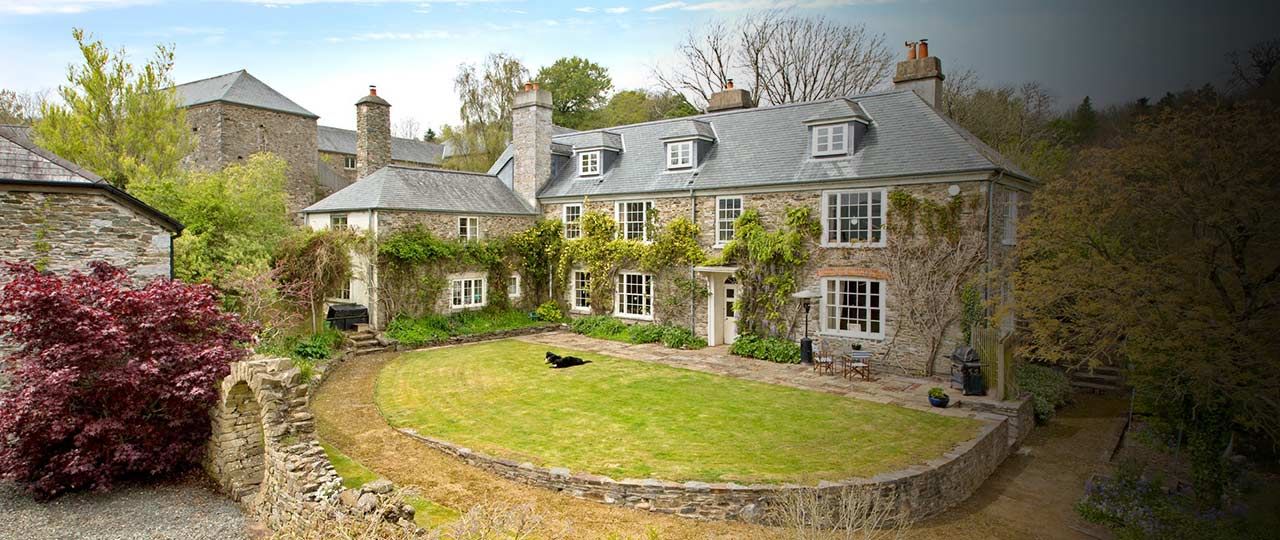
Oliver Custance Baker
Head of National Country House Department


Head of National Country House Department
A new trend has emerged for buying properties that help you pay off your mortgage, whether that’s through renting out the space to a local company or buying one with an already up-and-running business.
We look at some of the options available if you want a home that pays its way…
Yoga retreats
You won’t often find a home for sale with its own yoga studio – but that’s exactly what you get at Rill Farm, a Grade II Listed farmhouse in Devon.
Oliver Custance Baker, Partner – Country House and Farm Sales, says: “Rill Farm provides a completely different set up to pretty much anything else out there. It’s a unique opportunity – there aren’t that many yoga studios on the market.
“For those wanting to receive a different style of revenue to the usual holiday cottages, this is a great option. They’ve got a handful of really good clients that keep coming back, so you’ve got a reliable set income. It’s a cracking space.”
And while many people might be concerned that having such a business on their doorstep might be too much of a commitment, Oliver says that as the business buildings are slightly separate from the main house, so you can still make the divide between home and work life if you want.
He adds: “It depends on how much you want to put into the business as well – you could get a manager in for the studio or you could run it yourself. Plus, with the yoga business, you’ve got set business hours, while if you’re running a B&B type operation you’re on call 24/7.”
Oliver says that homes with additional income have always been in high demand. But ones that offer something a bit different are an exciting prospect – even if it means there might be fewer buyers.
Dining in
The kitchen is becoming the hub for many homes these days. And as our obsession with cooking continues to grow, the value of a good kitchen grows with it.
Take for example, Dinham Weir House in Shropshire. While currently not operational, not too long ago the home housed Michelin-starred restaurant ‘Mr & Mrs Underhill’s’ – one of the most popular eateries in the area.
The current owners Chris and Judy Bradley are among Britain's best and most successful restaurateurs. It’s hoped the new buyer will take advantage of the bespoke Swiss kitchen and transform it back into both a home and a food venue.
And even if you’re no whizz in the kitchen, it doesn’t mean your hobs need to go to waste. Following in the footsteps of websites like AirBnB, new companies like Foodstars and KitchentoRent allow you to rent out your kitchen - allowing budding chefs and catering companies access to the kind of facilities they need, but might not be able to afford.
Fancy a pint?
While cooking up a storm is one option for added income from your property, another is to provide a drink to go along with your meal.
Home breweries are on the rise in the UK. Thanks to a 2002 tax change, those producing fewer than 5,000 hectolitres a year save 50% on the amount of duty they pay. This, along with a trend for artisan products, has led to a surge in home breweries. In total, there were just 500 breweries in the UK in 2000. This has now risen to over 1,700.
Meanwhile, specialist brew shop Muntons say the sales of home brewing kits increased threefold between 2009 and 2015.
Taking the step from producing small batch beer to becoming a commercial enterprise that makes a profit does require some investment to scale up your operation – probably around £50,000. Though compared to some small businesses this isn’t a huge amount.
And if you do happen upon the recipe for a perfect pint, you can always license it to a larger brewer for a decent sum.
Getting crafty
Thanks to the rise in websites that allow people to sell their own goods, people are starting to use parts of their homes as studios to create craft products or pieces of art.
A survey from one such website – notonthehighstreet.com – found that 66% of their producers work from home, including those who work within the main building and those who work at home in a separate space.
You don’t even need to sell online, with many home owners transforming out buildings into studios that double as gallery space. You can even showcase other people’s work and take a commission, as any gallery owner would.